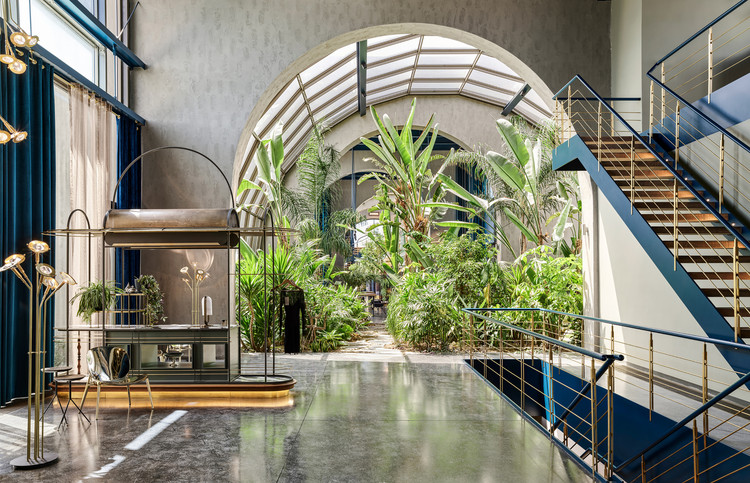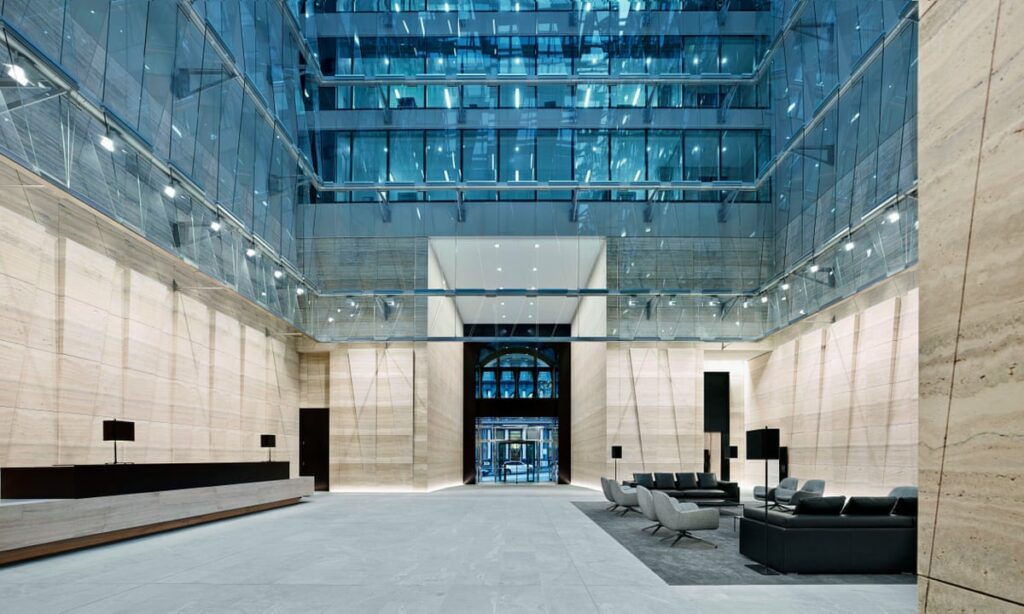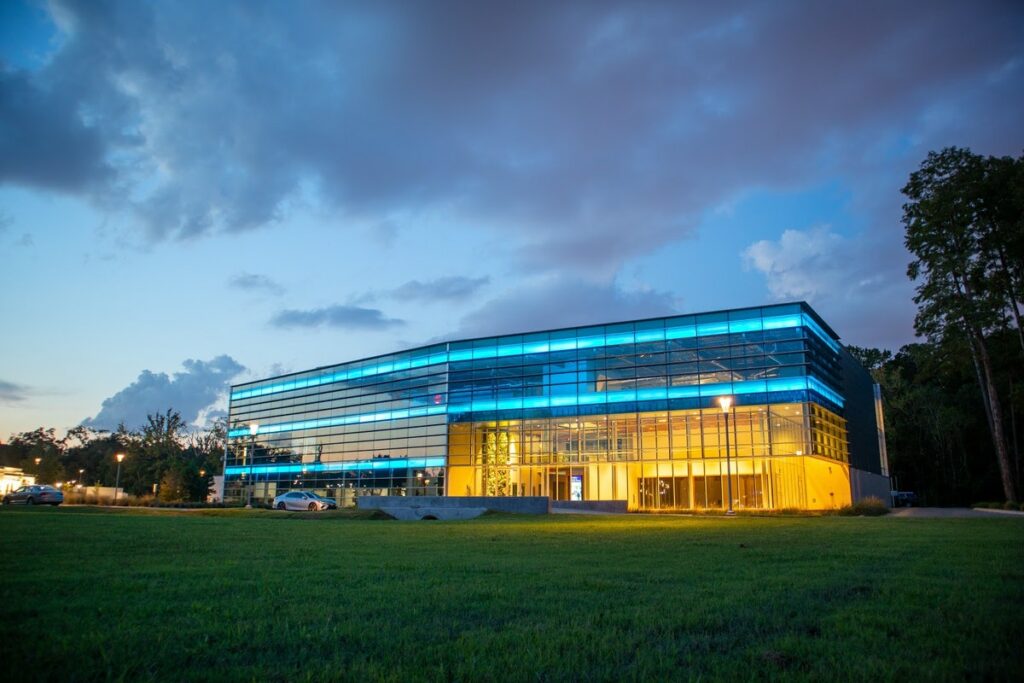Eco-friendly construction is more than just a trend. Your business can save money and help the environment by renovating your commercial building with environmental upgrades. Green construction is a relatively new concept in commercial structures, and many business owners find the planning and implementation of these upgrades to be overwhelming.
Benefits of Green Building
There are many reasons to make your next commercial remodel environmentally friendly.
- Cut energy costs: Electricity, water, and gas can be costly. Making eco-friendly upgrades to your building can help your business save money on monthly utilities. Over time, your business can save hundreds or thousands of dollars on its energy bills. For businesses seeking to get the most savings possible from their eco-friendly renovation, we recommend performing an energy audit to determine where upgrades are most needed.
- Reduce consumption of non-renewable resources: Eco-friendly upgrades allow your business to cut back dramatically its use of non-renewable resources like petroleum and natural gas.
- Help your community. What’s good for the earth is good for your community. By joining the ranks of businesses that have made a commitment to protecting the environment, your company will help make your community a cleaner and more desirable place.

- Attract environmentally conscious customers: Many people who prioritize protection of the environment will seek out businesses that do the same. By making green improvements to your business and by advertising these improvements to the general public, your business is more likely to attract environmentally conscious customers.
- Take advantage of tax credits: In some cases, businesses that invest in green building upgrades can claim tax credits. Your business’s accountant will be able to tell you more about tax credits for energy efficient improvements. Consult with your accountant to find out more information.
- Put your business on the cutting edge: Environmentally friendly upgrades tend to incorporate the most recent advances in building and construction, which can put your business on the cutting edge of modern construction.
Environmentally Friendly Upgrades to Commercial Construction
Solar Panels
To get solar panels for your business, you’ll need to have a consultation with a company that can determine how many panels your building will need to satisfy your energy consumption.
Reclaimed Materials
Reclaimed or repurposed materials are materials that have already been used once and are now being used again. Reclaimed materials can come from anywhere. In Connecticut, many reclaimed materials come from old barns, sheds, and warehouses. Wood and metal are among the most common types of reclaimed materials. Even old, unused paint can be given a second life.
Some businesses intentionally seek out reclaimed materials for aesthetic value. Reclaimed wood can include certain types of hard to get species and even extinct woods that are no longer available. Often, reclaimed wood bears scars, scratches, nail holes and other imperfections, giving this type of material a rustic appearance. This decorative and aesthetically interesting material is often used in showrooms, restaurants, and rustic shops. In addition to natural beauty, reclaimed materials can also save businesses money and eliminate waste.

Skylights
Many business owners don’t think of skylights as being green, but skylights are used to allow natural light to illuminate interior spaces. Skylights save electricity that would be used to power electric lights and also create a more pleasant interior environment. In establishments like restaurants and other businesses that rely heavily upon ambience, skylights are desirable and attractive in addition to being practical.
Heated Floors
Heated floors are a good investment for a variety of reasons. Heated floors keep warmth close to the ground, which helps keep people warmer. Heated floors are an especially wise investment for establishments like spas, massage clinics, and hotels, where customers are likely to walk around barefoot.
Heated floors also save money by heating only the space they intended to be heated rather than heating the entire interior space in order to keep customers comfortable.
Water Reduction
Water systems like rainwater barrels, tankless water heaters and other appliances can help your business save water. For businesses that use water to conduct business, a water collection system like a rain barrel can reduce the amount of water that the business draws from nearby water supplies.
Green Windows
Old windows that no longer fit properly in their frames can be a major source of heat loss during the winter. In the summer, old windows can contribute to the warming of interior spaces. Both of these problems force your business’s HVAC system to run extra hard just to keep your commercial space comfortable for your employees and customers.
Green windows represent a significant upfront cost. In some cases, businesses choose to save money by installing a Low-E coating over their existing windows. A Low-E coating can prevent the exchange of heat through the glass. In other cases, businesses choose to replace their existing windows with brand new windows. Costs for window replacement can be recouped over time by saving money on utilities. In addition to lower heating and cooling costs, green windows reduce pressure on the building HVAC system, thus reducing HVAC maintenance costs.
Radiant systems for commercial projects
As far as green building innovations go, radiant solutions have long been popular in Europe, even as they continue to gain steam in the US. Barcol-Air itself has been a large part of the excitement. But some have asked: Can radiant systems be used in a commercial building as the sole sensible heating and cooling system?
Six Fundamental Principles of Sustainable Building Design
1. Optimize Site Potential
Whether designing a new building or retrofitting an existing building, site design must combine with sustainable design to achieve a successful project and begins with the proper site selection, including the actual building’s rehabilitation. The location, orientation, and landscaping of a building all affect local ecosystems, transportation methods, and energy use.
2. Optimize Energy Use
Improving the energy performance of existing buildings is important to increasing our energy liberation. Operating net-zero energy buildings is one way to significantly reduce our dependence on fossil fuel-derived energy.
3. Protect and Conserve Water
A sustainable building design and construction is one that uses Water efficiently to minimize the impact that influences freshwater stock. Additionally, sustainable construction and building design should encourage the practice of recycling water on certain on-site projects when possible.
4. Optimize Building Space and Material Use
As the world population continues to grow; the use of natural resources (and the demands for them) continues to increase. A sustainable building is designed and operated to use and reuse materials in the most productive and sustainable way over the entire life cycle.
Utilizing sustainable materials can also help to minimize environmental impacts such as global warming, resource depletion, and toxicity. According to wbdg.org, “environmentally preferable materials reduce impacts on human health and the environment, and contribute to improved worker safety and health, reduced liabilities, and reduced disposal costs.”
5. Enhance Indoor Environmental Quality (IEQ)
The indoor environmental quality (IEQ) of a building has a significant impact on occupant health, comfort, and productivity. Among other attributes, a sustainable building maximizes daylighting, has appropriate ventilation and moisture control, optimizes acoustic performance, and avoids the use of materials with high-VOC emissions.
6. Optimize Operational and Maintenance Practices
Building owners face unique challenges to meet increasing demands for new or renovated sustainable building designs that are balanced with safe, secure, and productive environments.
Through collaboration, engineers, architects, and other site contractors can specify materials and systems that simplify operational practices and reduce maintenance requirements. On-site and within the facility, these systems not only aim to reduce water and power requirements, and require less toxic chemicals use, but are also cost-effective and reduce life-cycle costs.
Green buildings, as many knows, have a less negative impact on the environment than standard buildings. Their construction minimizes on-site grading, saves natural resources by using alternative building materials, and recycles construction waste rather than sending truck after truck to landfills. A majority of a green building’s interior spaces have natural lighting and outdoor views, while highly efficient HVAC (heating, ventilating, and air-conditioning) systems and low-VOC (volatile organic compound) elements like paint, flooring, and furniture create a superior indoor air quality.

Sustainable Wall Systems
When constructing a new green project, the interior walls and infrastructure should include sustainable materials. You can choose metal wall systems that meet LEED standards, ensuring quality and sustainable materials. Using recycled materials, metal panels that go into walls could have a lower impact on your carbon footprint compared to using traditional lumber materials.
Furthermore, a quality wall system has better insulation, moisture management and cooling properties than traditional walls. These factors will add to the sustainability of the building in the long term as well.

